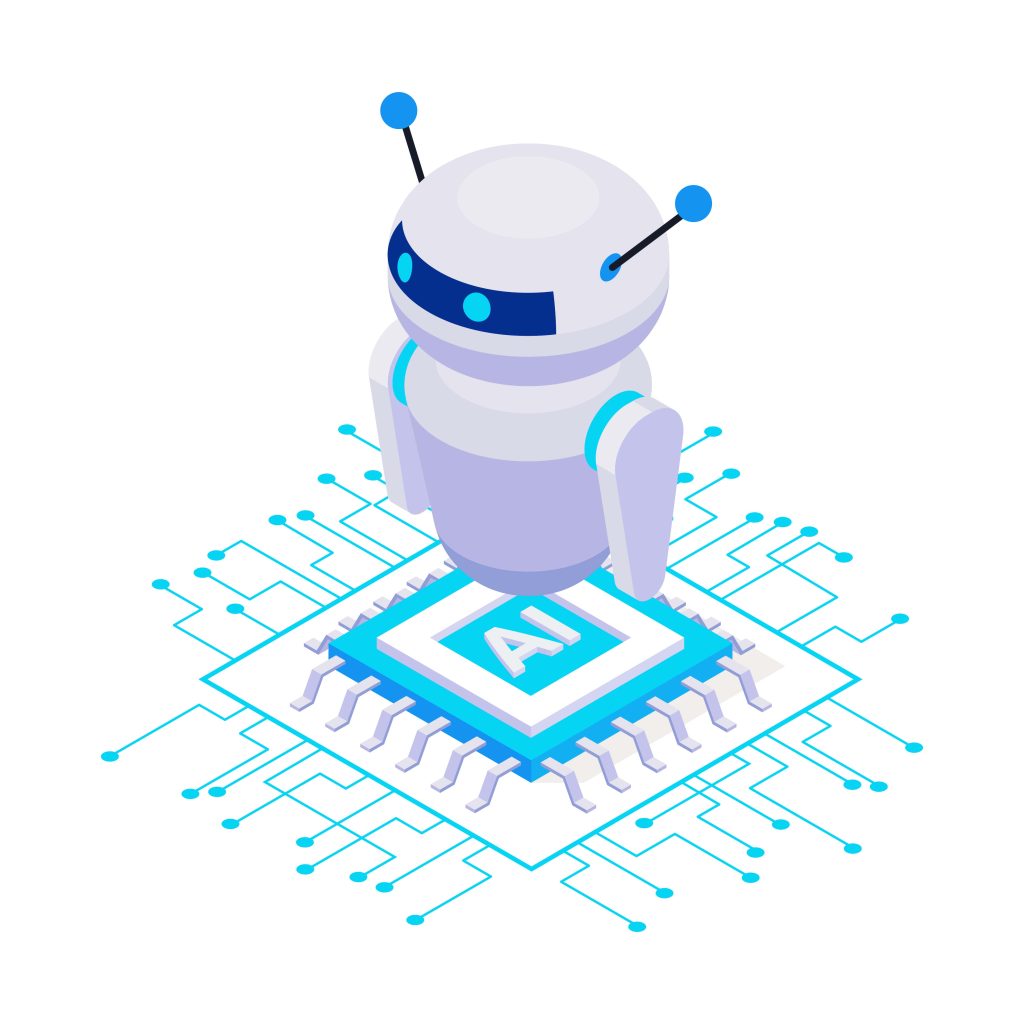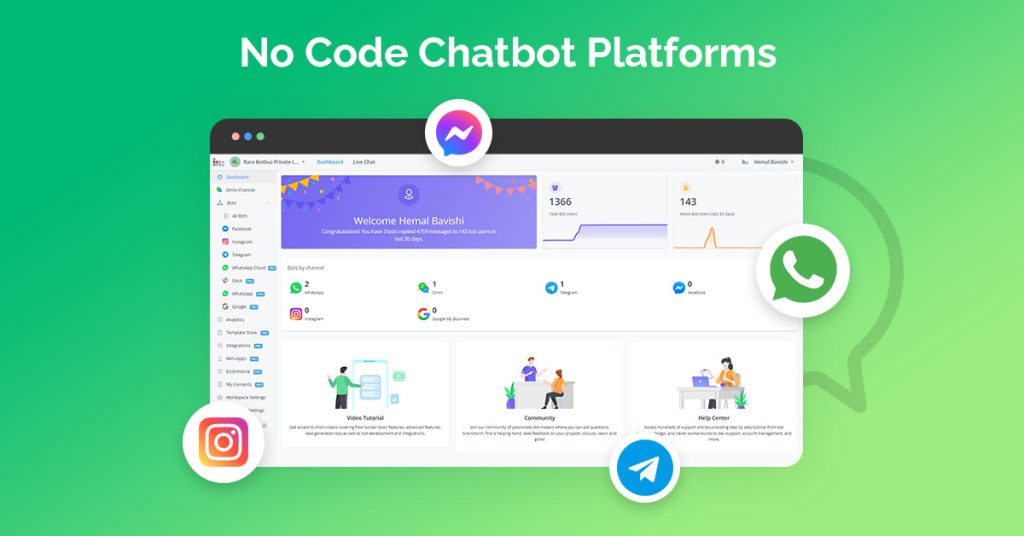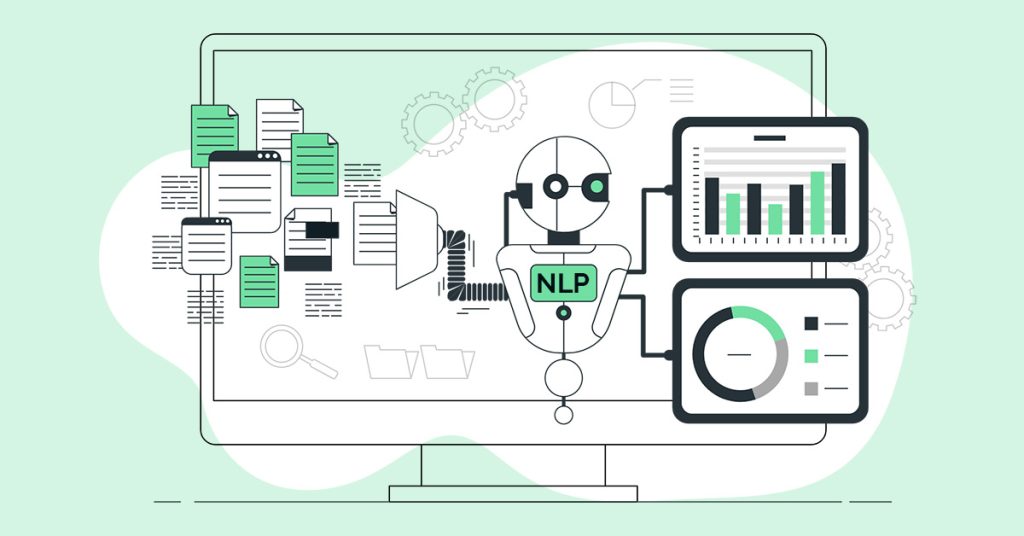- The Rise of Chatbots : Transforming Industries & Customer Service.
- 6 Essential Characteristics :
- 1) Adaptability & Context Awarenes :
- Natural Language Processing (NLP) Capabilities in Chatbots :
- 3) Seamless Integration and Multichanel Support of Chatbots :
- 4) Learning and Continuous Improvement of Chatbots :
- 5) Efficiency and Time-Saving Abilities :
- 6) Personalization and User-Centric Approach :
- Botbuz as an Example of a Successful Chatbot :
The Rise of Chatbots : Transforming Industries & Customer Service
In today’s fast-paced, digital world, chatbots are rapidly emerging. It revolutionizes how businesses interact with customers with diverse industries. These intelligent conversational agents are no longer just futuristic science fiction. They are becoming increasingly sophisticated & integrated into our everyday lives.
Chatbots streamlines customer service & provides personalized support to automating repetitive tasks. Thus, boosting sales. The impact of chatbots is undeniable. They offer businesses a unique opportunity to :
Reduce operational costs : It can handle a large volume of inquiries and transactions 24/7. Thus, freeing up human agents for more complex tasks.
Improve customer service : They provide immediate & responsive support, ensuring customers receive timely assistance whenever needed.
Increase engagement and personalization : It offers personalized recommendations and tailor interactions to individual customer needs. Thus, leading to a more positive & engaging experience.
Boost sales and marketing : AI-powered chatbots can qualify leads & answer product inquiries. It even closes deals, significantly enhancing sales & marketing efforts.
The popularity of chatbots is growing. Thus, it is crucial to understand the key characteristics that define their success. These essential elements include :
Natural Language Processing (NLP) : The ability to understand and respond to natural language in a human-like way. Thus, ensuring smooth and natural interactions.
Machine Learning (ML) : Continuously learning and adapting to user behavior and preferences. Thus, delivering increasingly personalized and relevant responses.
Integration with existing systems : Seamless integration with CRM, marketing automation, and other business systems. Thus, allowing for efficient data exchange and a holistic customer experience.
Intuitive design and user interface : User-friendly interfaces that are easy to navigate and understand. Ensuring a positive user experience.
Clear and transparent communication : Chatbots should clearly communicate their capabilities and limitations, building trust and preventing misunderstandings.
By understanding the rising significance of chatbots & the essential characteristics that define their success, businesses can harness the power of this technology to achieve significant benefits across various industries. From enhancing customer service and engagement to streamlining operations and driving sales. It offer a transformative opportunity for businesses to thrive in today’s competitive landscape.
6 Essential Characteristics of Chatbots :
1) Adaptability and Context Awareness :
In the dynamic world of human interaction, adaptability & context awareness are crucial for effective communication. Similarly, for chatbots to thrive, they need the ability to adapt to different user preferences & contexts. This allows them to provide relevant, personalized responses that enhance the overall user experience.
Adaptability :
User Preferences : It can be trained to recognize and adapt to individual user preferences. For example, they can adjust their language style, tone & humor. It is based on the user’s age, culture, and communication preferences.
Context Awareness : By understanding the context of the conversation, chatbots can tailor their responses to be more relevant & insightful. This includes factors such as the user’s previous requests, location, time of day & current topic of discussion.
Personalization : Combining user preferences and context awareness allows chatbots to personalize their interactions. This can include providing targeted recommendations & offering relevant information. Also suggesting helpful resources based on the individual user’s needs & interests.
Contextual Understanding :
Natural Language Processing (NLP) : NLP enables to extract meaning from user input. It includes identifying keywords, understanding sentiment & recognizing sarcasm or humor. This allows them to interpret the context of the conversation and respond accordingly.
Machine Learning (ML) : ML algorithms can be used to analyze user data. It can identify patterns in their behavior & preferences. This information can then be used to personalize the chatbot’s responses. Thus, improving its ability to understand context over time.
Dialogue Management : Dialogue management systems enable to track the conversation flow. It maintains a consistent context across multiple interactions. This ensures that the conversation remains relevant & on track, even if there are interruptions or digressions.
Benefits of Adaptability and Context Awareness :
Improved User Experience : By adapting to user preferences and understanding the context of the conversation, chatbots can provide a more natural, engaging & personalized experience. This can lead to increased user satisfaction and loyalty.
Enhanced Efficiency : Context-aware chatbots can handle a wider range of customer interactions & resolve issues more effectively. This can lead to reduced resolution times & improved customer service.
Increased Sales and Revenue : By offering personalized recommendations & tailored interactions, It can help businesses convert more leads & boost sales.
Stronger Brand Image : Chatbots that are adaptable & context-aware can create a positive image of the brand. It helps to demonstrate its commitment to customer service and personalized experiences.
Adaptability and context awareness are core elements of effective chatbots. By understanding user preferences and responding accordingly, it can provide a more natural, personalized & engaging experience for users. This can lead to a plethora of benefits for businesses. It includes improved customer service, increased sales & a stronger brand image. As chatbots continue to evolve, their ability to adapt and understand context will become important for their success.
Natural Language Processing (NLP) plays an instrumental role in empowering chatbots. It helps to understand & interpret human language. Thus, paving the way for natural and engaging conversations. Without NLP, chatbots would be limited to predefined responses, unable to adapt to the nuances and complexities of human communication.
Here’s why NLP is so crucial :
Understanding User Intent :
NLP allows to analyze the context, sentiment & intent behind user queries. This enables them to go beyond keywords and determine the user’s true goal. Thus, providing relevant responses and assistance.
Interpreting Complex Language :
NLP techniques like sentiment analysis and entity recognition enable chatbots to understand sarcasm, humor & other complex aspects of human language. It helps in having more natural and engaging interactions.
Learning and Adapting :
NLP algorithms continuously learn & adapt from user interactions. Thus, improving their ability to understand & respond to diverse communication styles and preferences.
NLP technology is constantly evolving. It allows chatbots to become increasingly sophisticated & capable of understanding & responding to human language with remarkable accuracy & nuance. As NLP continues to advance, chatbots will play an even more prominent role in shaping the future of human-computer interaction. Thus, revolutionizing the way we communicate & interact with technology in our daily lives.

3) Seamless Integration and Multichannel Support of Chatbots :
In today’s increasingly interconnected world, customers expect to interact with businesses on their preferred platforms & channels. To provide a truly seamless & convenient experience, it’s crucial for chatbots to be adaptable & integrate seamlessly with various platforms & systems.
This ability to offer multichannel support unlocks several advantages :
Enhanced Customer Reach : By being present on multiple platforms, chatbots can reach a wider audience. Thus, catering to diverse customer preferences.
Increased Accessibility : Customers can access support & information whenever & wherever they need it, regardless of the device or platform they’re using.
Unified Customer Experience : A consistent experience across all platforms ensures customer satisfaction. It helps to build trust in the brand.
Improved Operational Efficiency : Centralized management of chatbot interactions across platforms reduces operational overhead. Thus, simplifying workflow optimization.
Examples of Seamless Integration and Multichannel Support :
Website Chatbots : It seamlessly integrates into websites offer immediate assistance to website visitors. It answers questions, guides them through product information & facilitates purchases.
Messaging App Chatbots : Integration with popular messaging apps like WhatsApp, Facebook Messenger & Telegram allows businesses to connect with customers directly on their preferred platforms. It offers a familiar & convenient communication channel.
Social Media Chatbots : It can engage with followers on social media platforms like Twitter and Instagram. It can respond to inquiries, handle customer complaints & promote products or services.
Integration with Internal Systems : It can connect with internal systems like CRM, inventory management & payment gateways. Thus, enabling them to access relevant customer information, process orders & provide real-time updates.
As technology advances, chatbots will become sophisticated & capable of seamlessly integrating with an even broader range of platforms & systems. This will further blur the lines between different channels, creating unified & omnichannel customer experience. Businesses that embrace multichannel chatbots early will gain a significant competitive advantage. Thus, ensuring they are present & available to meet the evolving needs & expectations of customers in the digital age.
4) Learning and Continuous Improvement of Chatbots :
One of the most remarkable aspects of successful chatbots is their ability to learn and continuously improve over time. This feature allows them to adapt to changing user preferences, handle new situations and provide increasingly accurate and helpful responses.
Here’s how chatbots achieve continuous learning and improvement :
Machine Learning (ML) :
Supervised Learning : They are trained on large datasets of labeled user conversations. These datasets allow the ML algorithms to learn the patterns and relationships between user queries and appropriate responses.
Unsupervised Learning : It can also analyze unlabeled data, such as user interactions and feedback, to identify hidden patterns and discover new ways to improve their responses.
Reinforcement Learning : This technique allows chatbots to learn by trial and error, rewarding them for successful interactions and penalizing them for mistakes. This incentivizes the chatbot to continuously improve its performance.
The Future of Learning Chatbots :
As machine learning technology advances, chatbots will become even more capable of learning in real-time and adapting to individual user needs. This will further personalize the user experience and unlock new opportunities for businesses to leverage chatbots for various applications. Additionally, research in areas like natural language processing and reinforcement learning will contribute to the development of even more sophisticated learning algorithms, paving the way for the next generation of intelligent and adaptive chatbots.
In conclusion, the ability to learn and continuously improve is a key differentiator for successful chatbots. It allows them to adapt to changing environments, personalize user experiences and deliver increasingly valuable interactions. As technology continues to evolve, learning chatbots will play an even more significant role in shaping the future of human-computer interaction and revolutionizing the way we interact with technology in our everyday lives.
5) Efficiency and Time-Saving Abilities :
In today’s fast-paced world, businesses are constantly seeking ways to improve efficiency & save time. It offers a powerful solution by streamlining processes, automating tasks and significantly reducing response times. This translates to significant benefits across various departments and functions within an organization.
Here’s how it enhance operational efficiency :
- Streamlining Processes :
- It can handle repetitive tasks. It can provide product information, answer FAQs, and process orders. This frees up human employees to focus on more complex and strategic work.
- It can automate workflows. It integrates with other systems, such as CRM and ticketing platforms. Thus, enabling seamless information flow and task execution.
- They can collect and analyze user data. Thus, providing valuable insights that can be used to optimize processes & improve decision-making.
- Reducing Response Time :
- Chatbots can provide immediate assistance to customers 24/7, regardless of location or time zone. This significantly reduces wait times and improves customer satisfaction.
- Chatbots can handle multiple inquiries simultaneously. It improves service efficiency and reduces the workload on human agents.
- It can identify urgent requests & prioritize them. Thus, ensuring that critical issues are addressed promptly.
As chatbots continue to evolve and become more sophisticated, their impact on operational efficiency will only become more significant. Businesses that embrace chatbot technology early will gain a competitive advantage by streamlining processes, reducing costs & improving customer experience. The future of work will be defined by collaboration between humans and intelligent machines and chatbots will be at the forefront of this revolution.
6) Personalization and User-Centric Approach :
In today’s customer-centric world, personalization is no longer a luxury, but a necessity. Chatbots can deliver tailored experiences and adapt to individual user needs. These are the key to building stronger relationships and driving engagement.
Here’s how personalization plays a crucial role :
- Understanding User Preferences :
- Chatbots can collect and analyze user data. It includes past interactions, browsing history, and purchase records. This data provides valuable insights into individual preferences and needs.
- It can use feedback mechanisms like surveys & ratings to gather explicit user preferences.
- By analyzing user behavior & preferences, chatbots can tailor their responses, recommendations & assistance to each individual.
- Delivering Personalized Experiences :
- It can personalize greetings, recommendations & product offers based on user preferences & past interactions. It helps in creating more relevant and engaging experience for each user.
- Chatbots can adjust their communication style & tone to match the user’s preferences. Thus, making interactions feel more natural & personal.
- It can provide targeted support & assistance based on the user’s specific needs & situation.
As advancements in AI and machine learning continue, chatbots will become adept at understanding individual users & tailoring their interactions accordingly. This will enable them to provide hyper-personalized experiences. This experience is indistinguishable from human interactions. Additionally, the integration of user data from various sources will allow chatbots to build a more comprehensive understanding of individual needs & preferences. Thus, further enhancing the user experience & driving engagement.
By embracing personalization and prioritizing user-centricity, chatbots can become invaluable tools for businesses to build stronger relationships, improve customer satisfaction, and achieve their business goals. As the lines between humans and machines continue to blur, personalized chatbots will play an increasingly significant role in shaping the future of human-computer interaction.

Botbuz as an Example of a Successful Chatbot :
Botbuz exemplifies how these six key characteristics can create a truly effective & valuable chatbot solution. By incorporating all of these traits, Botbuz delivers :
- Adaptable and personalized responses : Tailored interactions based on user preferences and context.
- Natural and engaging conversations : Powered by advanced NLP capabilities for smoother communication.
- Omnichannel accessibility : Seamless integration with various platforms for user convenience.
- Continuous learning and improvement : Constantly evolving performance through data analysis & user feedback.
- Enhanced operational efficiency : Automating tasks and resolving inquiries efficiently.
- Personalized user experiences: Tailored recommendations & support based on individual needs.
By embracing the six key characteristics discussed, organizations can leverage the full potential of chatbots to achieve significant benefits. It enhances customer service and engagement to streamlining operations and driving sales. Thus, offering a transformative opportunity for businesses across all industries. As chatbot technology continues to evolve, its impact will only become more profound. Thus, revolutionizing the way we interact with technology & shaping the future of human-computer interaction.




